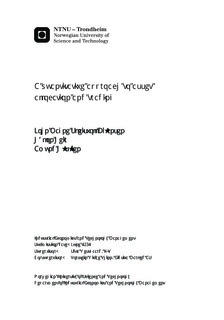A quantitative approach to asset allocation and trading
Master thesis
Permanent lenke
http://hdl.handle.net/11250/2444161Utgivelsesdato
2012Metadata
Vis full innførselSamlinger
Sammendrag
This thesis evaluates and verifies technical trading strategies and risk management tools on the behalf of Holden Capital AS. The strategies are quantitatively formulated by constructing a complete base trading model. The thesis further evaluates if the use of dynamic allocation, governed by trend recognition methods, could add value to the base model. The base trading model yield consistently profitable out-of-sample results when assessed over a ten year time period with static allocation. Yielding a compound annual growth rate of 19\%, the model is verified as capable of exploiting trends in asset prices. The model consistently outperforms benchmark indices across risk adjusted performance measures. However, profitability differs significantly for the distinct assets, indicating the model framework is better suited for some distribution characteristics than others.
A trend recognition and allocation model is built to assess whether daily dynamic allocation of risk capital enhances the profitability of the base trading model. Out of the seven trend recognition methods evaluated, most fail to single out trending assets, allocating almost as wide as static allocation. Three methods outperform static allocation's monthly returns as well as obtaining higher information ratio statistics when compared to a benchmark index. When evaluated on risk adjusted performance measures considering return relative to volatility, all trend recognition methods are outperformed by static allocation. The loss of diversification when only allocating to certain assets increases volatility beyond the value of excess return.
Due to the sensitive nature of this work, the thesis is subject to restrictions limiting publicity for a time period of five years. A confidentiality agreement has been signed by the authors, Eidsiva Marked AS, Holden Capital AS and NTNU.
